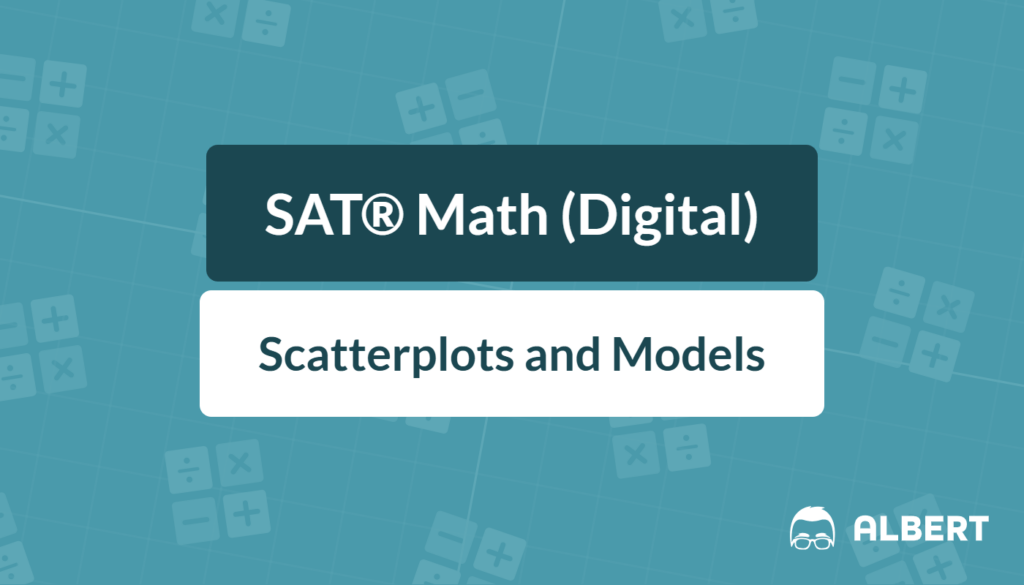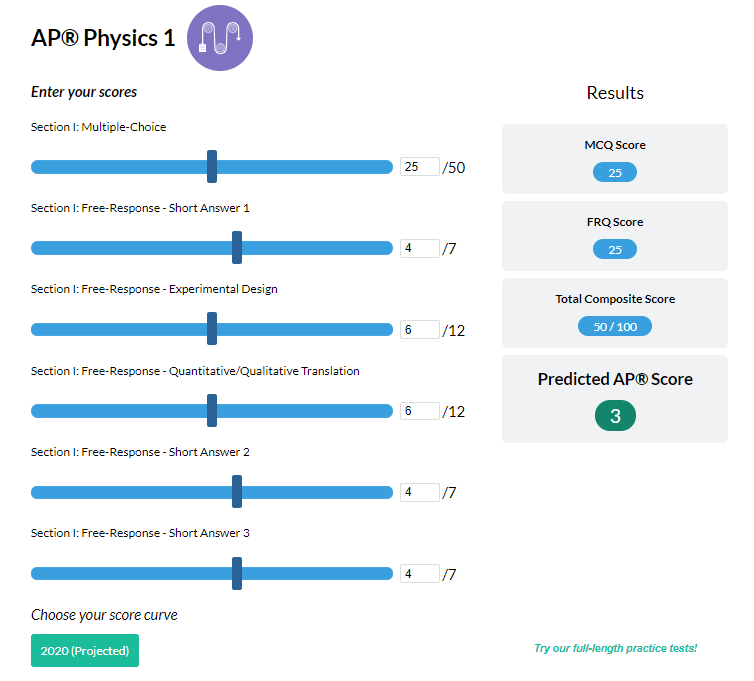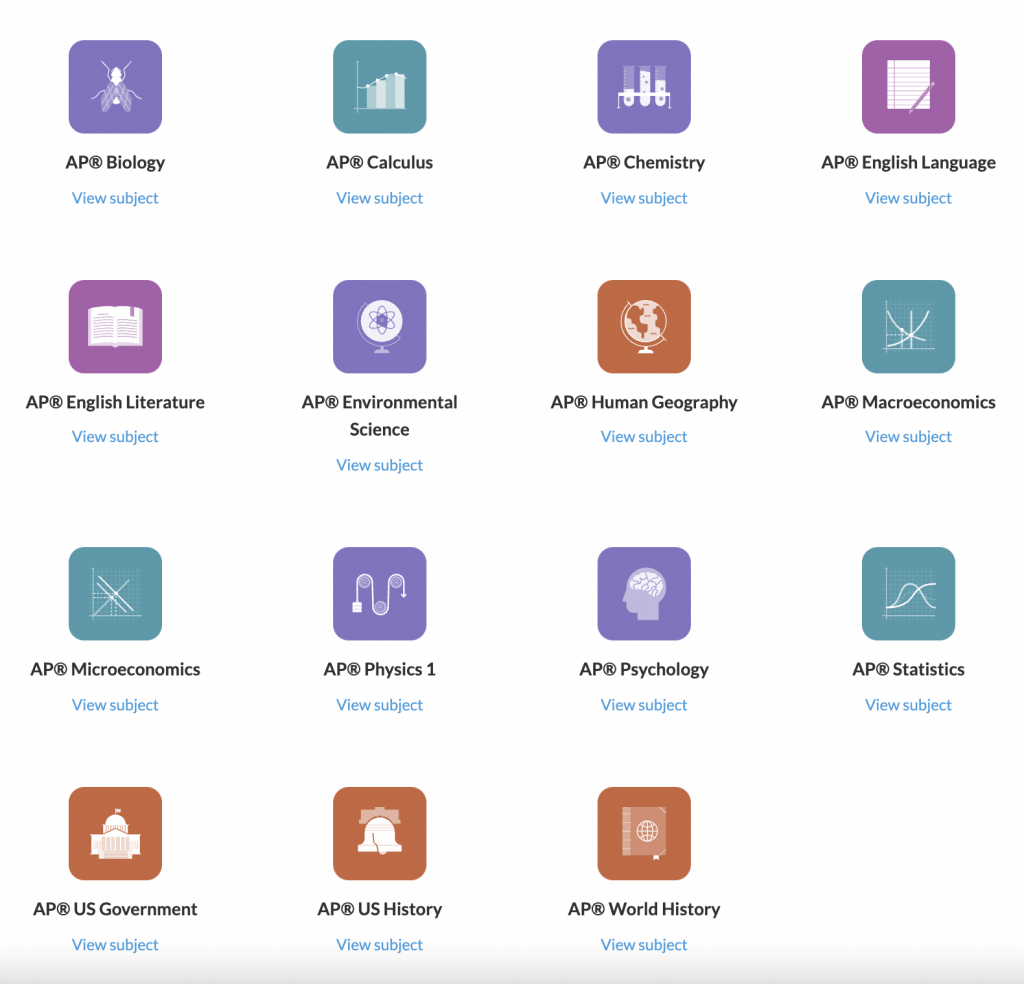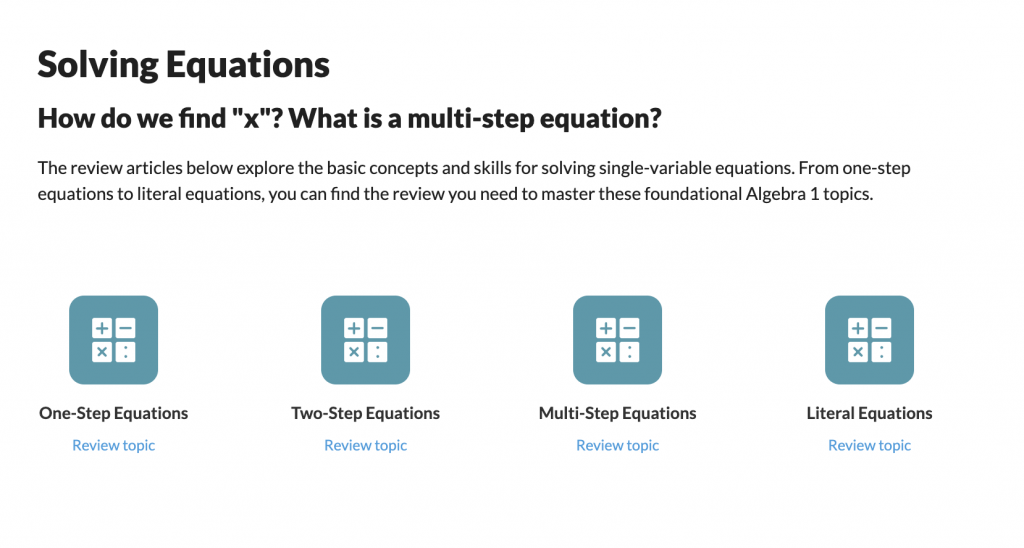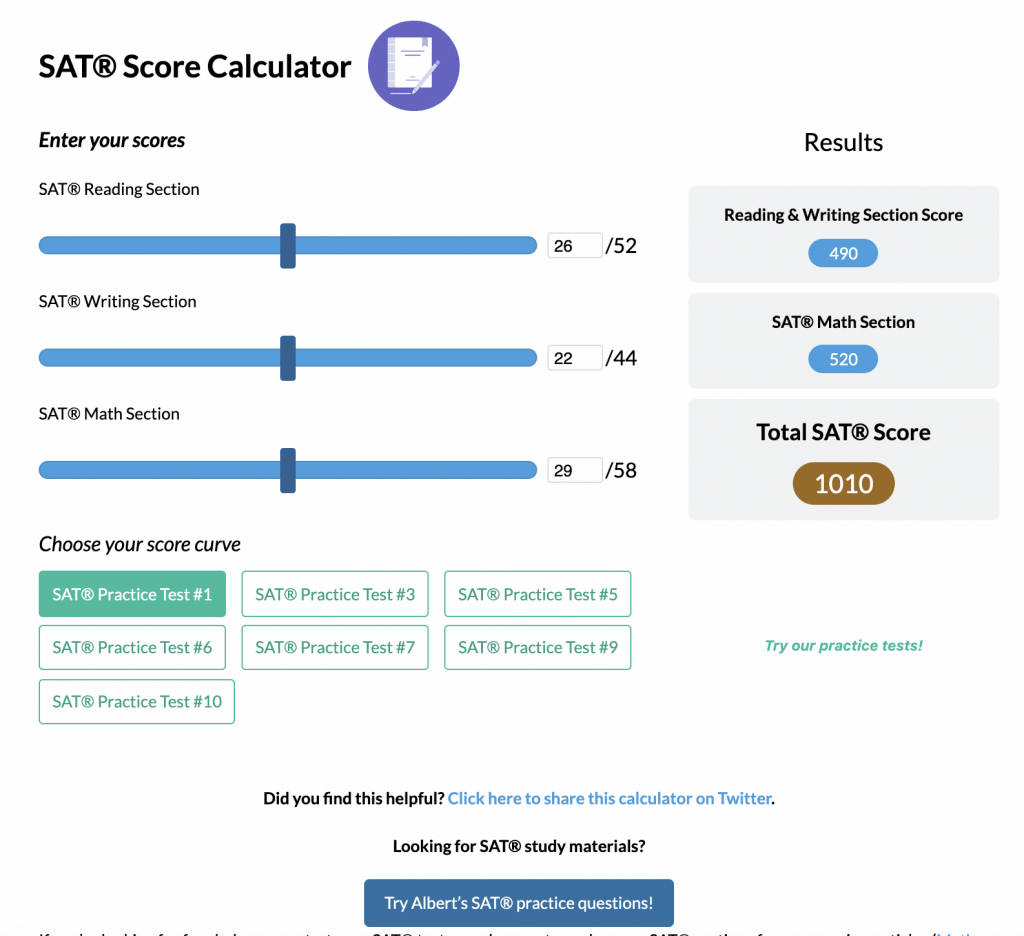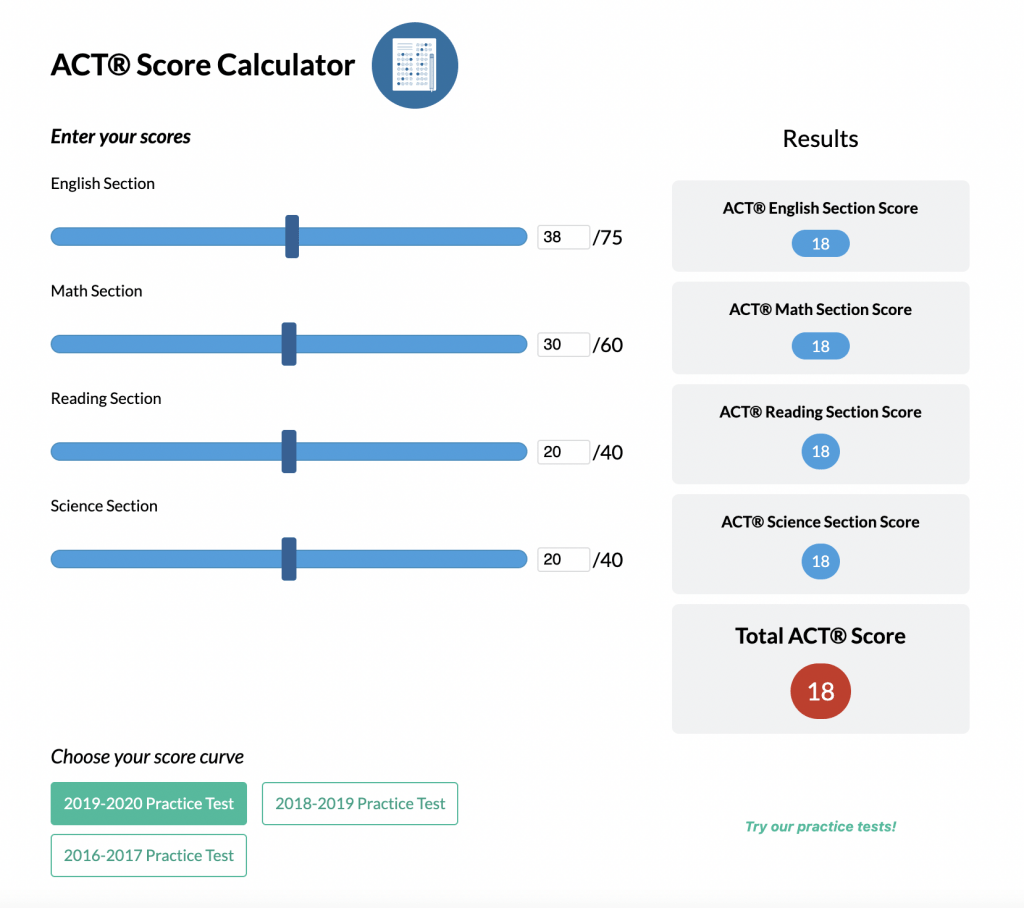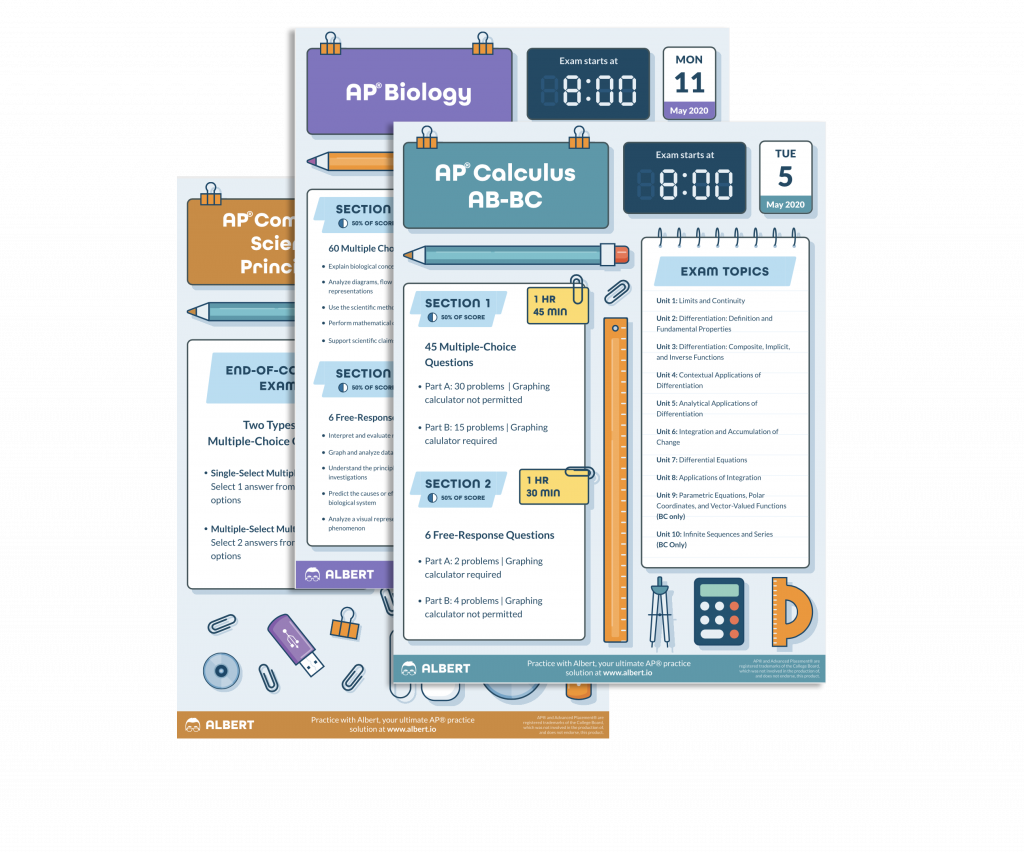What We Review
Introduction
Graphs full of scattered dots may look messy at first. However, the SAT® loves these pictures because a scatter plot and its model help translate real-world data into clear predictions. Whenever two numerical variables interact (temperature versus ice-cream sales, time versus distance) a scatterplot can capture the story in seconds. Therefore, anyone aiming for a high SAT® Math score must know how to read the pattern, fit the right model, and interpret what the slope or curve actually means.
Quick Warm-Up: What a Scatterplot Shows
A scatterplot is a graph of ordered pairs. Each dot represents one measurement of two quantitative variables.
- The horizontal axis (x) shows the independent variable.
- The vertical axis (y) shows the dependent variable.
On the SAT®, questions built on a simple dot graph often ask students to:
- Identify the trend
- Choose or write an equation that fits the data
- Use the model to predict future points
Because the dots show actual data, the overall direction, shape, and any unusual points all matter.
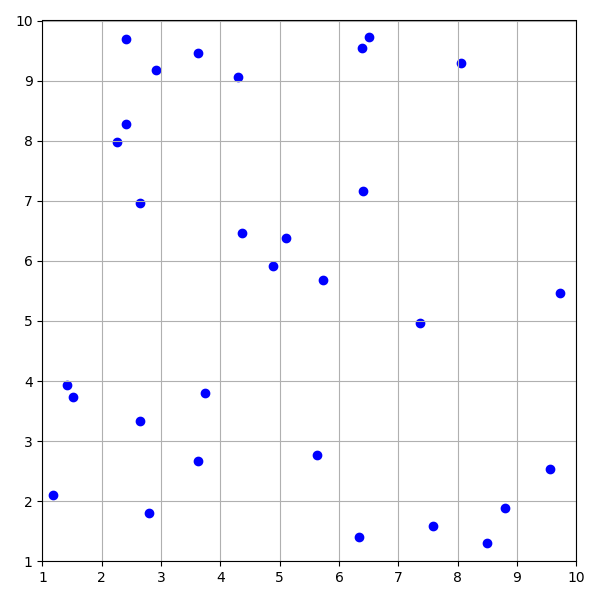
Spotting Patterns at a Glance
Quick visual checks save time.
A. Direction
- Positive association: dots rise from left to right.
- Negative association: dots fall from left to right.
- No association: dots look random.
B. Clusters and Outliers
- Clusters suggest sub-groups.
- Outliers sit far from the main cloud and can pull trend lines away from the true center.
C. Straight or Curved Trend
Sometimes the dots hug a straight path; other times they bend. Deciding early whether a line or a curve is best sets up every later step.
Example 1 — Reading a Scatterplot
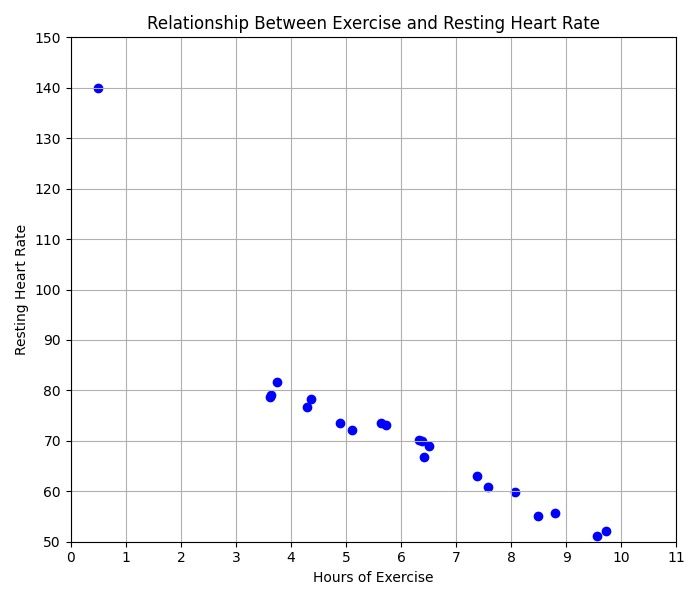
- Read the axis titles: “Hours of Exercise” (x) and “Resting Heart Rate” (y).
- Dots decrease from left to right and are close together. Therefore, the association is negative and fairly strong.
- One point at (0.5, 140) sits far above the others. That outlier could raise the best-fit line and lessen the negative slope.
The Line of Best Fit: Sketching, Calculating, and Interpreting
A. Estimating Slope
Pick two anchor points on the imagined trend line. Then use rise over run.
m=\dfrac{\text{change in }y}{\text{change in }x}
B. Finding the y-Intercept
Extend the line left until it meets the y-axis. That height is the intercept b.
C. Technology Tip
The SAT® sometimes provides regression output such as y = 2.6x + 4.1. Knowing how to read those numbers is faster than recomputing by hand.
Example 2 — Building an Equation
A scatterplot of “cups of coffee (x)” vs. “hours awake (y)” looks linear.
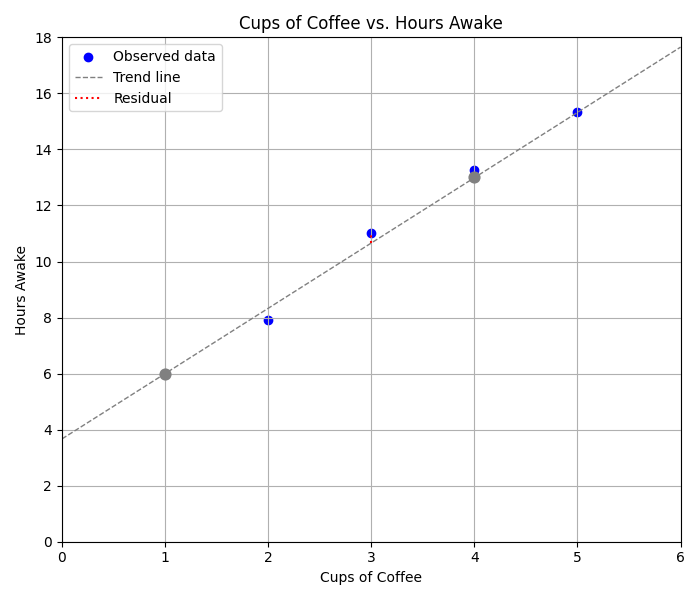
- Draw a light trend line.
- Choose two points on the line, say (1, 6) and (4, 13).
- Calculate slope:
- m=\dfrac{13-6}{4-1}= \dfrac{7}{3}\approx2.33
- Use point-slope form:
- y-6 = 2.33(x-1)
- Simplify:
- y = 2.33x + 3.67
Prediction Check: For 3 cups, predicted hours are:
y = 2.33(3)+3.67 \approx 10.66
The actual dot at x = 3 shows 11 hours, so the residual is about 0.34, which is quite small.
Slope and Intercept in Context
A slope tells the rate of change. Therefore, it answers “How much does y grow (or fall) when x increases by one?”
An intercept gives the starting value when x = 0.
Example 3 — Interpretation
Given y = 2.3x + 5 for “hours studied (x) vs. test score increase (y)”
- Slope 2.3 means each extra hour adds about 2.3 points to the score.
- Intercept 5 means a student who studies zero hours still gains 5 points—perhaps from regular class time.
Beyond Straight Lines: Selecting Linear, Quadratic, or Exponential Models
A. Linear
- Constant difference pattern (add 3, add 3…).
- Dots align roughly straight.
B. Quadratic
- One bend; looks like a U or upside-down U.
- Second differences stay constant.
C. Exponential
- Curve increases or decreases more and more quickly.
- Multiplicative pattern (\cdot 1.5, \cdot 1.5…).
Example 4 — Data Table Identification
| x | y_1 | y_2 | y_3 |
| 0 | 2 | 5 | 1 |
| 1 | 5 | 4 | 2 |
| 2 | 8 | -1 | 4 |
| 3 | 11 | -10 | 8 |
| 4 | 14 | -23 | 16 |
- y_1 adds 3 each step → Linear.
- y_2 subtracts 1 then 5 then 9 → Second differences constant at −4 → Quadratic.
- y_3 multiplies by 2 each step → Exponential.
Linear vs. Exponential Growth—Side-by-Side
Linear growth adds the same amount. Exponential growth multiplies by the same factor. Therefore, exponential always overtakes linear in the long run.
Example 5 — Graph Comparison
Plot y = 3x + 2 and y = 2\cdot(1.5)^x for 0 \le x \le 6.
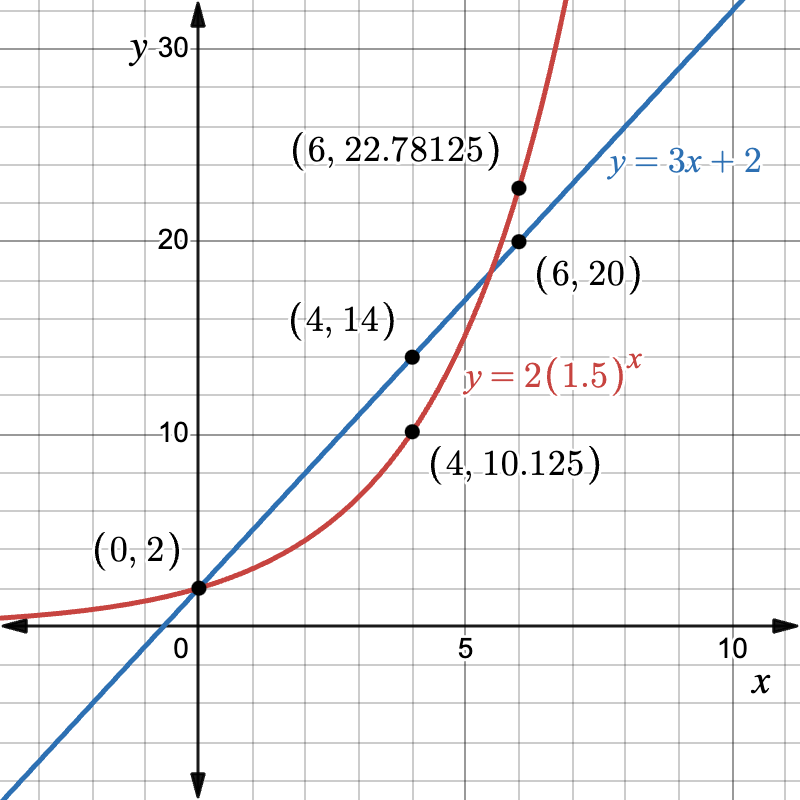
- At x = 0, linear gives 2; exponential gives 2.
- At x = 4, linear gives 14; exponential gives about 10.1.
- At x = 6, linear gives 20; exponential gives about 22.8 and has passed the line.
Thus, exponential growth eventually wins.
Using a Model for Prediction and Reasonableness Checks
- Interpolation: predicting inside the plotted x-range.
- Extrapolation: predicting beyond it; riskier because the pattern might change.
A residual reveals error:
\text{residual}= \text{actual }y - \text{predicted }y
Example 6 — Predicting and Checking
The best-fit equation for “years since purchase (x)” vs. “car value in \$1{,}000 (y)” is y = 18 - 1.5x.
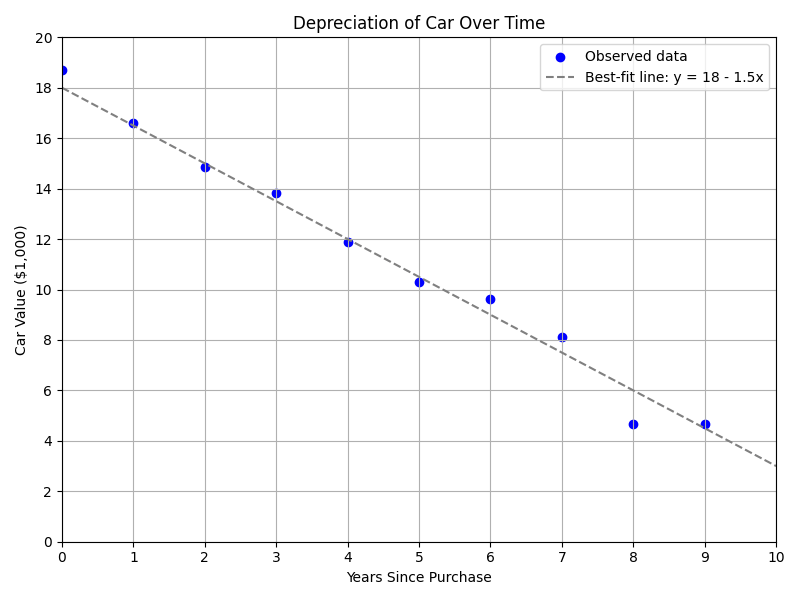
- Predict the value after 7 years:
- y = 18 - 1.5(7) = 7.5 thousand dollars.
- The actual data point shows \$8.1 k.
- Residual = 8.1 − 7.5 = 0.6 (in thousands).
- Because 0.6 is small relative to the car price, the model seems reasonable at x = 7.
Common SAT® Traps and Time-Saving Tips
- Watch axis units; sometimes one square = 5 units.
- Keep x and y in order while computing slope; mixing them reverses the sign.
- Avoid wild extrapolation. The SAT® often places answer choices that assume a trend far outside the data range.
Quick Reference Chart
| Term | Definition | SAT® Tip |
| Scatterplot | Graph of ordered pairs showing two-variable data | Look at the overall trend first |
| Line of best fit | Straight line that minimizes total residuals | Can be estimated visually |
| Slope | Change in y per 1-unit change in x | Represents “rate” in word problems |
| y-intercept | y value when x = 0 | Often, the initial amount |
| Residual | Actual y − Predicted y | Smaller = better fit |
| Linear growth | Adds a constant amount | Straight trend |
| Exponential growth | Multiplies by a constant factor | The curve gets steeper |
| Quadratic model | Parabolic curve with one turning point | Check for symmetry |
Quick Practice Set
- A scatterplot shows a positive linear trend with estimated equation y = 0.8x + 12. Predict y when x = 15.
- The table (x, y) = (0, 4), (1, 12), (2, 36), (3, 108) most likely fits what model type?
- The residual for a data point is −5. What does the negative sign tell about the actual y-value compared to the prediction?
Answer Key
- y = 0.8(15)+12 = 24
- Exponential (tripling each time).
- Actual y-value is 5 units below the model’s prediction.
Final Takeaways
Scatterplots and models unlock quick points on test day. First, recognize the pattern and choose a sensible model. Next, interpret slope and intercept in context, then use the equation to make smart predictions. Consistent practice—both with hand-drawn sketches and calculator regression—turns these steps into automatic wins under timed conditions.
Sharpen Your Skills for SAT® Math (Digital)
Are you preparing for the SAT® Math (Digital) test? We’ve got you covered! Try our review articles designed to help you confidently tackle real-world SAT® Math (Digital) problems. You’ll find everything you need to succeed, from quick tips to detailed strategies. Start exploring now!
Need help preparing for your SAT® Math (Digital) exam?
Albert has hundreds of SAT® Math (Digital) practice questions, free response, and full-length practice tests to try out.


